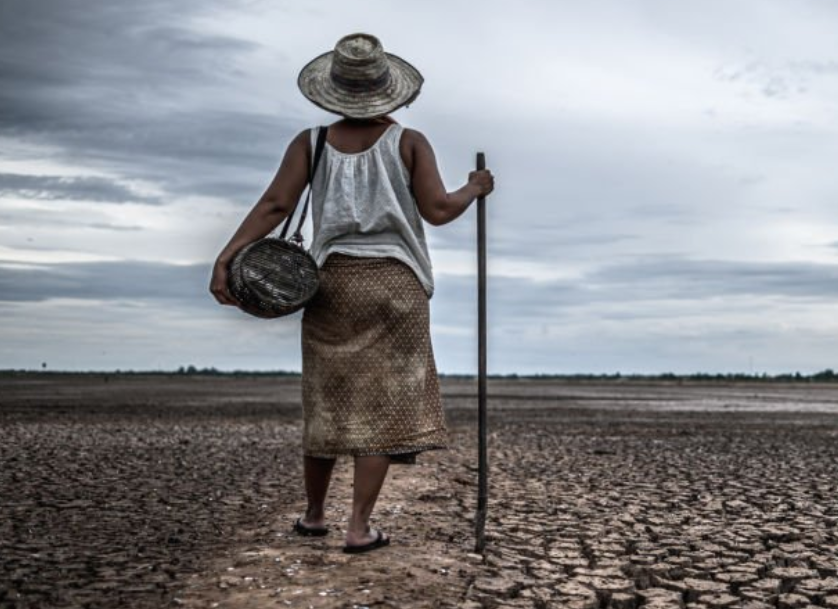
Mahima Parthi
Gendered Impacts of Climate Change: Amplifying Vulnerabilities and Necessitating Action
Most Read Stories Today
-
Water Scarcity and Artificial Rainfall: The Positive and The Negative Effects of Cloud Seeding, including Health Hazards and Climate Implications.
-
Renewable Energy in Rural Areas: Challenges, Opportunities, and Successful Rural Projects
-
Pakistan's Agriculture at Risk Due to Climate Variability
-
South Africa's Recent Floods: Is Climate Change to Blame?
-
South Korea's floods: root causes and prevention strategies.
-
South Africa: Cape Town, A City Under Fire
-
The Human Cost of Climate Disasters
-
Our Oceans, Our Future: The South African Dilemma of Overfishing
-
Degenerative Impact of Hydrocarbons On The Environment.
-
Sustainable Urban Planning - Copenhagen and the Path to Climate Resilience
Climate change is not merely an environmental issue; it is a complex phenomenon that intersects with social, political, and economic dynamics, often exacerbating existing vulnerabilities and inequalities.
In fragile and conflict-affected settings, climate change acts as a "threat multiplier," escalating tensions and intensifying risks for marginalized groups, particularly women and girls. This article explores the gendered impacts of climate change, focusing on how women face heightened vulnerabilities to various forms of violence and experience disproportionate challenges in disaster response and recovery efforts.
When disasters strike, women bear a disproportionate burden, facing higher risks of injury and mortality due to longstanding gender inequalities. Limited access to information, mobility constraints, and unequal decision-making power hinder women's ability to protect themselves and their families during emergencies. Moreover, the aftermath of disasters further compounds women's vulnerabilities, as they struggle to access relief and assistance, exacerbating their economic hardships and hindering their recovery.
One tangible example of the gendered impacts of climate change is the everyday task of laundry. As primary caregivers and homemakers, women often shoulder the responsibility for household chores, including washing clothes. However, with the increasing frequency and intensity of extreme weather events, such as prolonged rain or drought, women encounter significant obstacles in drying clothes outdoors. This seemingly mundane task becomes arduous and time-consuming, illustrating how climate change disrupts even the most basic aspects of daily life for women.
Furthermore, women's roles as food providers and caretakers make them particularly vulnerable to climate-induced disruptions in agricultural activities. Irregular rainfall patterns and crop failures directly affect women's ability to ensure food security for their families, exacerbating hunger and malnutrition. Additionally, women's limited access to resources, education, and decision-making power exacerbates their vulnerability to climate-related risks, perpetuating cycles of poverty and inequality.
Weather changes induced by climate change can also have significant implications for women's health. Extreme heatwaves, for example, can exacerbate existing health conditions and increase the risk of heat-related illnesses, particularly among pregnant women, children, and the elderly. Additionally, changes in temperature and precipitation patterns can impact women's access to clean water and sanitation facilities, leading to increased incidences of waterborne diseases and reproductive health issues.
Addressing gender disparities in climate change adaptation and mitigation strategies is imperative for building resilient communities. Empowering women with access to education, resources, and leadership roles enhances their capacity to cope with climate impacts and contribute to sustainable solutions. Recognizing and addressing the gendered dimensions of climate change is essential for promoting environmental justice and fostering inclusive and equitable responses to the climate crisis.
Child marriage, identified as a form of gender-based violence, has been observed in various communities as a coping mechanism during disasters. In regions like Bangladesh, Ethiopia, and Kenya, child marriage serves as a way to obtain resources and recover from losses caused by climate-related disasters such as droughts, floods, and severe storms.
All reports highlight that extreme weather events linked to climate change disproportionately affect women and girls, impacting their ability to carry out daily tasks. This circumstance partially explains why some girls are compelled to leave school. Tasks like gathering firewood and water, traditionally assigned to women and girls, are significantly affected by adverse climate change effects. Consequently, women and girls must travel longer distances to fulfill these responsibilities, increasing their vulnerability to gender-based violence outside the home.
In conclusion, gender equality must be central to climate change discourse and action. By acknowledging and addressing the unique challenges faced by women and girls, we can build more resilient and sustainable communities, where everyone has the opportunity to thrive despite the challenges posed by a changing climate.

Terms & Conditions
Subscribe
Report
My comments